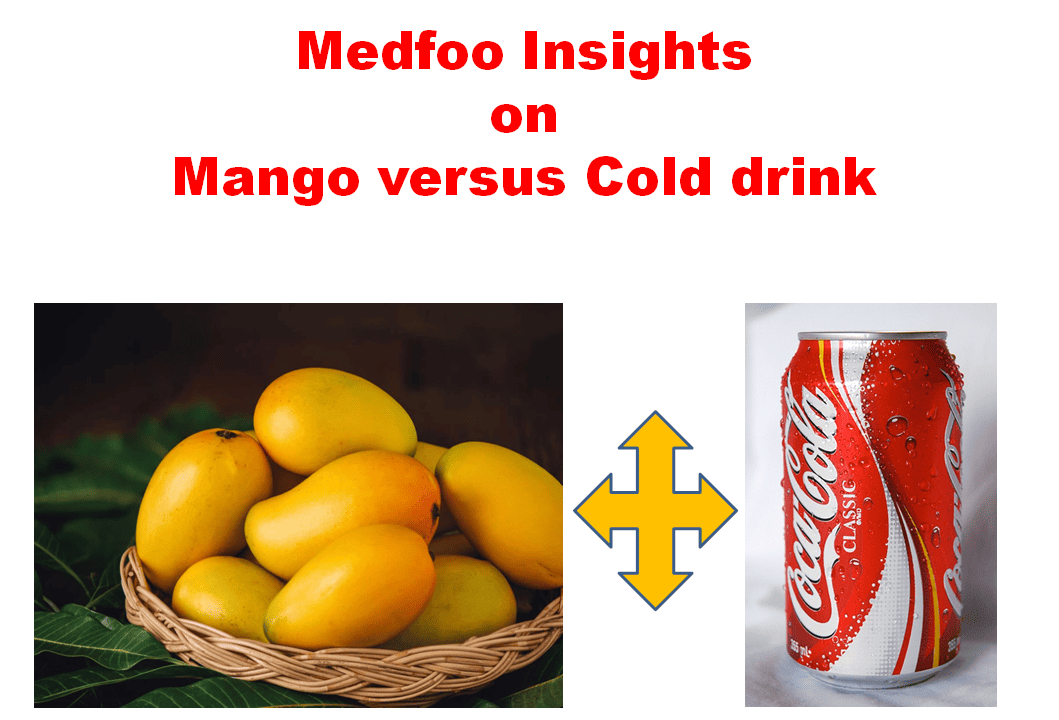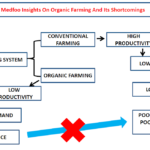Can We have cold drink after eating mango: A food safety concern
In the recent past, A rumour is propagated that tens of travellers were found dead due to drinking cold drinks after mango eating. The news is claimed to nearby Chandigarh city, India. This rumour is being forwarded to millions of people without any further cross-checks.
Consequently, I have also got the same message of this rumour. So, after thinking much, being a responsible food scientist & technologist, It endorsed me to write an article on this issue for checking the fact and telling the people about what is right.

We will discuss the events in a chronological manner so as to understand the readers in a simple and effective way.
First of all, we will discuss the claims made in the rumour.
- Claims made in the rumour
In rumour, a claim was made that when people drank cold drinks after mango, it led to the synthesis of poison due to the chemical reactions between citric acid and carbonic acid.
In the viral message, it was said that mango is a good source of citric acid while cold drinks are having carbonic acid due to the mixing of carbon dioxide in sugar syrup during the manufacturing of cold drinks.
Now, we will see whether the claims made regarding citric acid and carbonic acid are right or wrong.
2. Examine the claim
To actually find out the fact made in the claim, we have to analyse the nutritional composition of both the food articles i.e. mango and cold drink.
Nutritional composition of mango
| S.No. | Type of Constituent | Amount per 100 g |
| 1 | Protein | 0.6 g |
| 2 | Fat | 0.4 g |
| 3 | Carbohydrate | 16.9 g |
| 4 | Fibre | 0.7 g |
| 5 | Mineral | 0.4 g |
| 6 | Vitamin c | 16 mg |
| 7 | Citric acid | 0.2-1.3 g |
from the above nutritional information of ripe mango (table), it is clear that mango contains a significant amount of citric acid.
Nutritional composition of typical cold drink (Thums up)
Although, there are a variety of cold drinks in the market. Here, we are taking the example of “Thums up” cold drink as it contains a comparatively greater amount of carbon dioxide which is responsible for the synthesis of carbonic acid in cold drinks.
| S.No. | Type of constituent | Amount per 100 ml |
| 1 | Energy | 42 kcal |
| 2 | Carbohydrate | 10.6 g |
| 3 | Total Sugars | 10.4 g |
| 4 | CO2 Concentration | 0.6-0.8 g Typically |
| 5 | Total Fat | 0 |
| 6 | Protein | 0 |
| 7 | Sodium | 0.81 mg |
From the above information table, it is clear that cold drinks contain a considerable amount of carbon dioxide which is typically around 6-8 g per litre. This carbon dioxide when comes in contact with water, it forms carbonic acid.
3. Examining the reaction of citric acid and carbonic acid
Both citric acid and carbonic acids are weak acids i.e. they poorly dissociate into their respective ions. The main reason for their poor ionisation is their very low dissociation constants i.e. Ka value.
a. Citric acid: It is a triprotic acid

From about structure of Citric acid, you can see, there are 3 hydroxyl (-OH) groups present. Hence for every proton donation, there will be a different Ka value or Dissociation constant.
Ka1 = 7.4 * 10^-4
Ka2 = 1.7 * 10^-5
Ka3 = 4.0 * 10^-7
you can easily observe the low values of Dissociation constants for citric acid due to which it acts as a weak acid.
b. Carbonic acid
It is a diprotic acid.
Chemical formula = H2CO3
The Ka value for Carbonic acid are as follows,
Ka1= 4.2 * 10^-7
Ka2 = 7.0 * 10^-11
which are again low values, hence carbonic acid also acts as a weak acid.
Chemical reaction fact
Due to their low Ka values, both the Citric acid and Carbonic acid will exist simultaneously in the solution and do not react with each other.
Conclusion
Citric acid does not form any compound with carbonic acid whether poisonous or non-poisonous.
Suggestive remark
No scientific proof or evidence was found against the viral rumour regarding consuming cold drinks after mango, So, taking a cold drink is not hazardous after mango as per the rumour spread in India.
Warning
Excessive consumption of cold drinks solely is harmful. So, avoid much cold drink consumption because, in many studies, it was found to link with obesity and associated health complications.
References
-
Compiled from Appendix 5 Chem 1A, B, C Lab Manual and Zumdahl 6th Ed.
2. A. E. Martell, R. M. Smith, and R. J. Motekaitis, NIST Database 46 (Gaithersburg, MD: National Institute of Standards and Technology, 2001).



